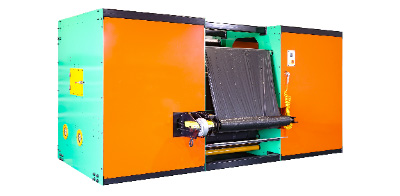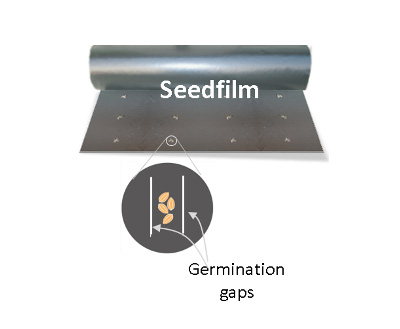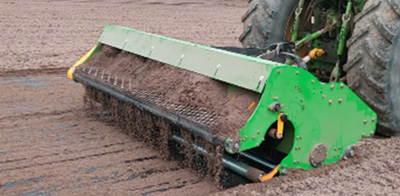Seed Film Cultivation
Seed Film Cultivation (SFC) using biodegradable film with attached seeds
Explanation :
- Seed-attacher makes a Seedfilm by attaching seeds to a biodegradable film.
- A mulcher, towed by a tractor, spreads the Seedfilm and covers the film with soil.
- This sowing method is called Seed Film Cultivation (SFC).
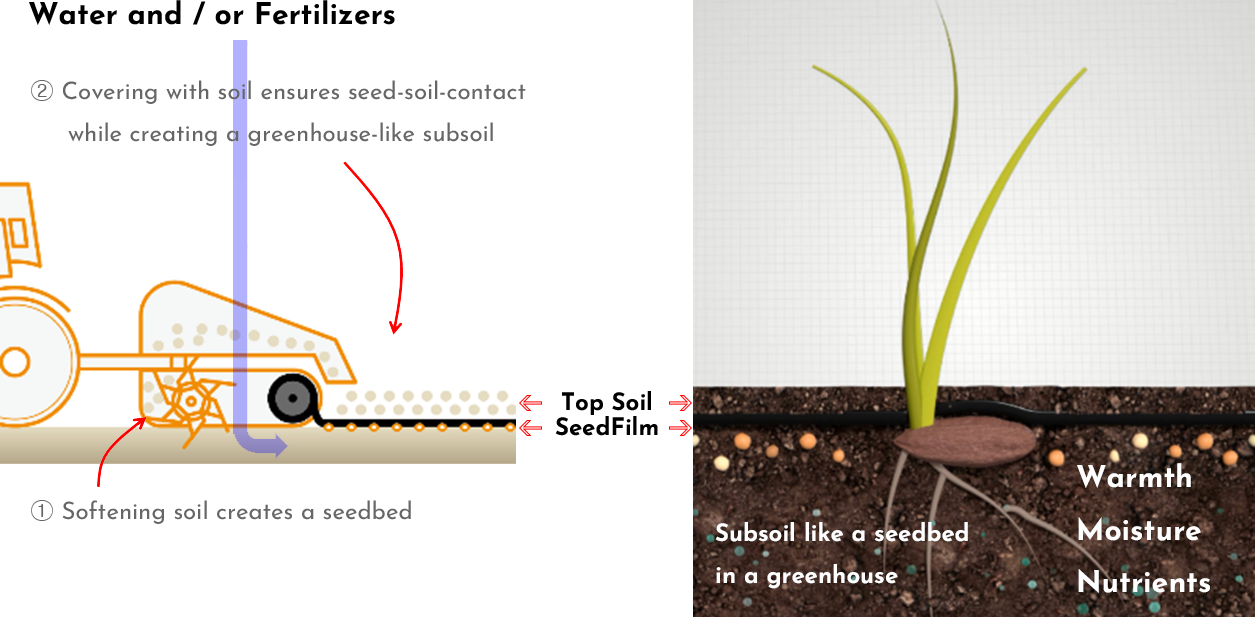
With SFC and early-maturing cultivar,
rice is expected to be harvested with 2,500 m3/ha of water
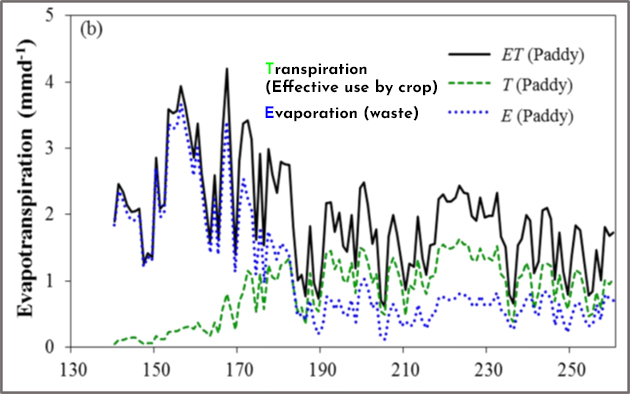
and evaporation (blue dotted line) of paddy rice (b). (n=3, +/-SD)
was measured using early-maturing indica cultivars with 120
crop-cycle-days, ET was 2398.8 m3/ha, of which E was 1387.5 (60%)
and T was 1009.1 m3/ha (40%). That is, the real productive water
(T) was only about 1000 m3/ha.
Even if water wastage is controlled by biofilms and drip irrigation,
some evaporation and deep percolation will inevitably occur.
Also, even if the T is about 1000 m3/ha, 2,000m3 to 3,000 m3
of irrigation water is required for rice farming using SFC and
early-maturing cultivar, and let's say 2,500 m3/ha for convenience.
SFC shortens the growing season and therefore requires less water
Rice cultivation with SFC and drip irrigation in the Chinese corn field shortened
the rice growth period by about 10% compared to the conventional irrigated rice.
-
1 2017.06.07(D0)
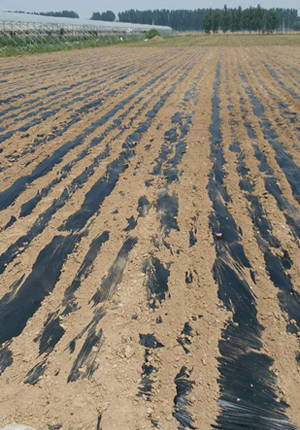
-
2 2017.06.21(D14)
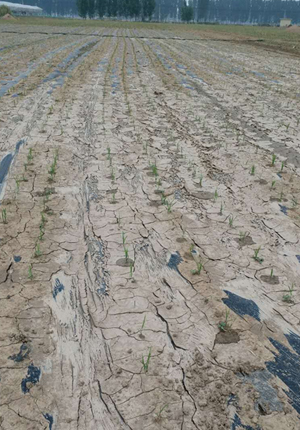
-
3 2017.07.01(D24)
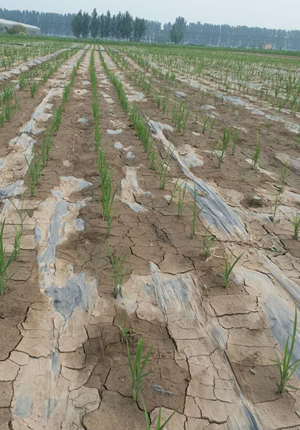
-
4 2017.07.04(D27)
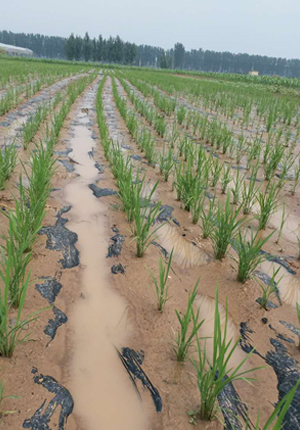
In particular, the soil temperature of the night using SFC was significantly higher than that of irrigated rice farming,
which is consistent with the study of H.Li (2020).
-
5 2017.07.10(D33)
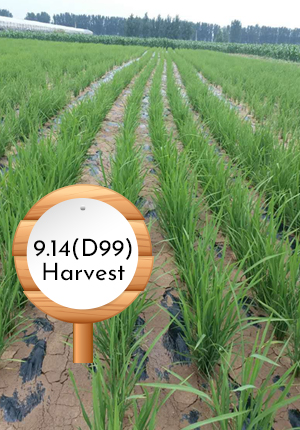
-
6 2017.08.04(D58)
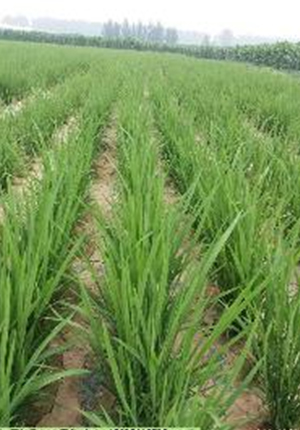
-
7 2017.07.15(D38)
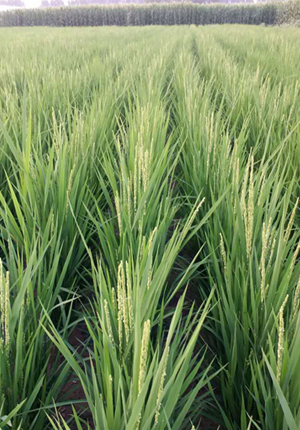
-
8 2017.08.18(D72)
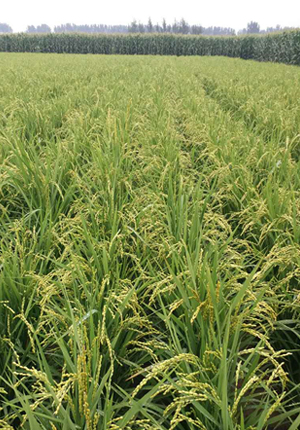
Compared to non-mulching, mulching film treatments increased soil temperature,
especially at night time, improved seed germination rate, plant height, leaf area of seedlings, and grain yield. (H LI·2020)
SFC rice farming without methane emissions
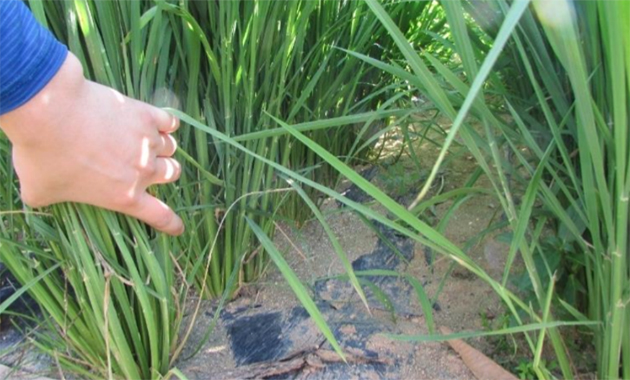
SFC with drip irrigation uses 2,500 m3/ha
of water and emits no methane.
paddy rice, but also uses 70% less water, diminishes methane
emissions to almost zero, and reduces arsenic uptake
by up to 90%. (Netafim)
Advantages of SFC posted on the Chinese Academy
of Agricultural Sciences website

This technology reduces the labor of rice seedling, transplanting and weeding and spraying pesticides.
The biofilm inhibits water evaporation and avoids the waste of water resources.
Relevant tests have shown that due to the heating and moisturizing effect of the biofilm,
the yield is increased by 15-20%, water resources are saved by 80%, methane
and carbon dioxide emissions are reduced by 80%, and fertilizers and pesticides are reduced by more than 60%.
Adopt SFC when the benefits outweigh the costs
-
 GHG
GHG
Reduced -
 Water
Water
Savings -
 Yield
Yield
Increased -
 Labor
Labor
Savings -
 ECO
ECO
Friendly
With SFC, in addition to increasing yields and water productivity,
- No seedlings, transplants, weeding, drip tape installation, etc. are required.
- It is possible to produce eco-friendly agricultural products without using herbicides.
- No methane is emitted.


